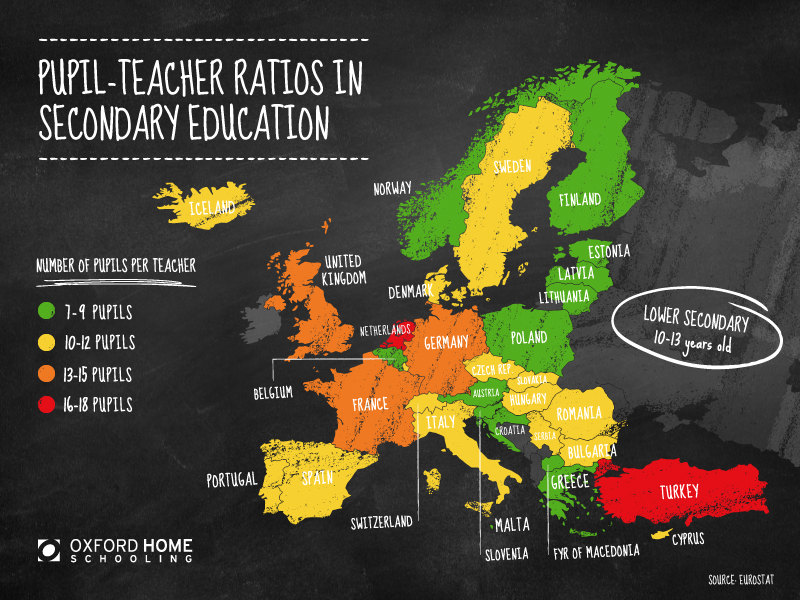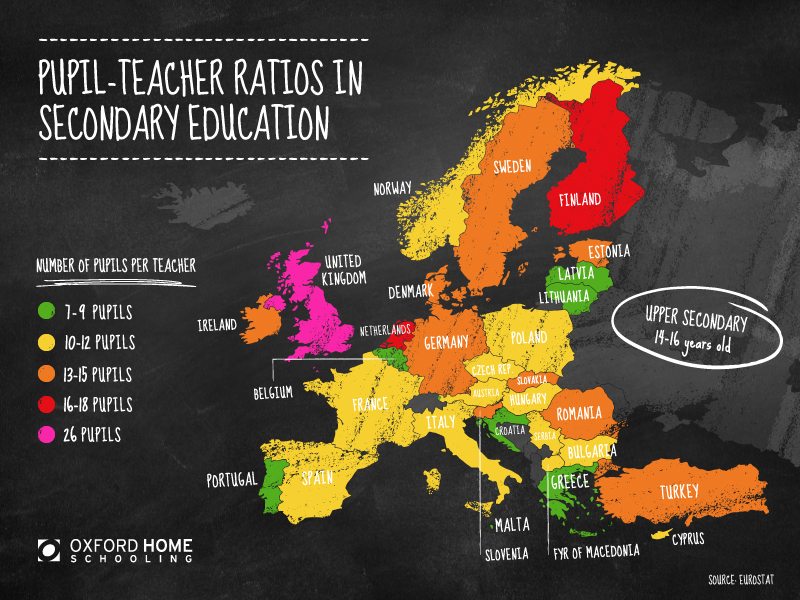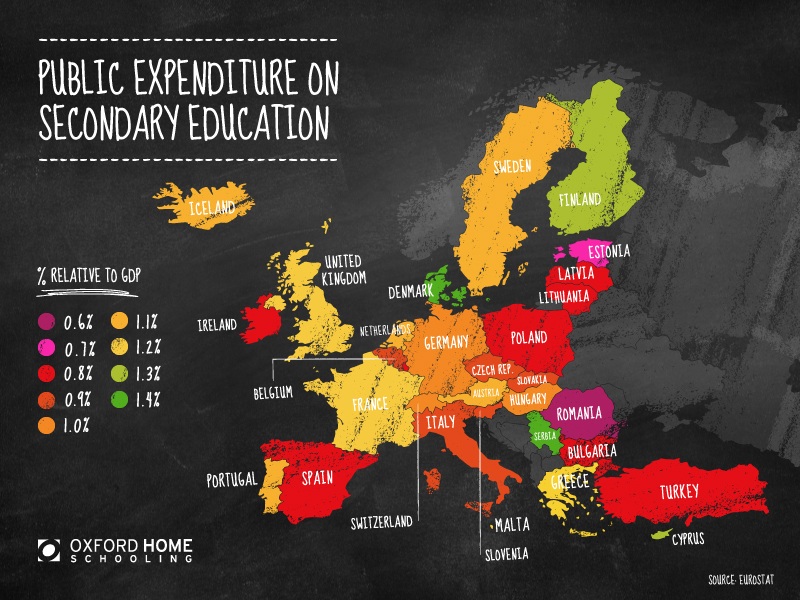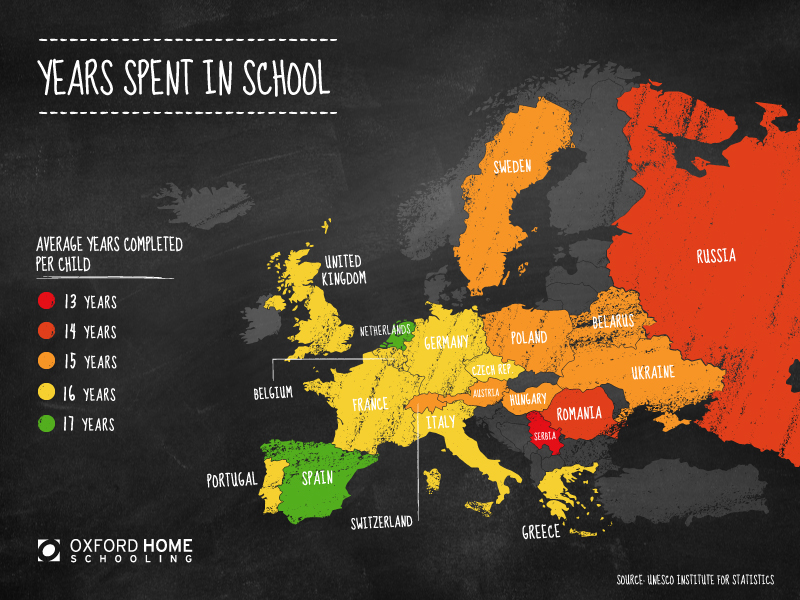How do different European countries compare when it comes to education, and how does the UK measure up?
In this series of maps, we look at three metrics – pupil-teacher ratios, public expenditure and years of schooling – to find out which countries fare the best, and which have room for improvement.
Pupil – Teacher ratios
Against many of our European neighbours, the UK sits somewhere in the middle in the lower secondary segment (10 to 13 years old) with 14.3 pupils per teacher. In upper secondary (14 to 16), however, the picture is much worse: at 26 pupils per teacher, the UK has more than twice the EU average of 12.9.
Closely linked with class sizes, the ratio of pupils to teachers nationwide is a common measure of educational quality. It’s commonly accepted that fewer pupils per teacher has a positive impact on attainment, as there is a larger pool of talent for schools to draw from.


Public expenditure on secondary education
The amount spent on secondary education as a percentage of a country’s Gross Domestic Product (GDP) can be seen as a general indicator of how highly each country prioritises education.
A greater percentage spent suggests more investment in teacher training, infrastructure and resources for each school. However, it should be noted that higher spending doesn’t always equal better results, and may also highlight spending inefficiencies within the system.

The UK ranks highly against this metric at 1.2% of GDP, with only Denmark, Serbia, Finland and Cyprus spending more.
Expected years of schooling
This metric shows how many years of education each pupil is expected to receive, and is closely tied to the years of compulsory education mandated by each country’s government.
The UK is about average in the EU by this measure, with most pupils receiving around 16.2 years of education. Only in Spain and the Netherlands does the average pupil receive 17 years or more.

Note that these statistics are from 2013, the same year from which 16-year-old pupils in the UK have been required to stay in some form of education, apprenticeship or training until age 18. This means the up-to-date figure is likely higher.